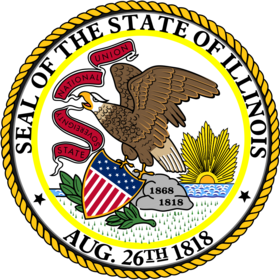Grade 6 - PARCC Examples of Opportunities & Connections
PARCC Examples of Opportunities & Connections
Connections among Standards, Clusters or Domains
Students’ work with ratios and proportional relationships (6.RP) can be combined with their work in representing quantitative relationships between dependent and independent variables (6.EE.9).
Plotting rational numbers in the coordinate plane (6.NS.8) is part of analyzing proportional relationships (6.RP.3a, 7.RP.2) and will become important for studying linear equations (8.EE.8) and graphs of functions (8.F).
Students use their skill in recognizing common factors (6.NS.4) to rewrite expressions (6.EE.3).
Writing, reading, evaluating, and transforming variable expressions (6.EE.14) and solving equations and inequalities (6.EE.7–8) can be combined with use of the volume formulas V = lwh and V = Bh (6.G.2).
Working with data sets can connect to estimation and mental computation. For example, in a situation where there are 20 different numbers that are all between 8 and 10, one might quickly estimate the sum of the numbers as 9 20 = 180.
Opportunities for In-Depth Focus
6.RP.3 When students work toward meeting this standard, they use a range of reasoning and representations to analyze proportional relationships.
6.NS.1 This is a culminating standard for extending multiplication and division to fractions.
6.NS.8 When students work with rational numbers in the coordinate plane to solve problems, they combine and consolidate elements from the other standards in this cluster.
6.EE.3 By applying properties of operations to generate equivalent expressions, students use properties of operations that they are familiar with from previous grades’ work with numbers — generalizing arithmetic in the process.
6.EE.7 When students write equations of the form x + p = q and px = q to solve real-world and mathematical problems, they draw on meanings of operations that they are familiar with from previous grades’ work. They also begin to learn algebraic approaches to solving problems.
Connecting Mathematical Content and Mathematical Practices
Mathematical practices should be evident throughout mathematics instruction and connected to all of the content areas highlighted above, as well as all other content areas addressed at this grade level. Mathematical tasks (short, long, scaffolded, and unscaffolded) are an important opportunity to connect content and practices. Some brief examples of how the content of this grade might be connected to the practices follow.
Reading and transforming expressions involves seeing and making use of structure (MP.7).
Relating expressions to situations requires making sense of problems (MP.1) and reasoning abstractly and quantitatively (MP.2).
The sequence of steps in the solution of an equation is a logical argument that students can construct and critique (MP.3). Such arguments require looking for and making use of structure (MP.7) and, over time, expressing regularity in repeated reasoning (MP.8).
Thinking about the point (1, r) in a graph of a proportional relationship with unit rate r involves reasoning abstractly and quantitatively (MP.2). The graph models with mathematics (MP.4) and uses appropriate tools strategically (MP.5).
Area, surface area, and volume present modeling opportunities (MP.4) and require students to attend to precision with the types of units involved (MP.6).
Students think with precision (MP.6) and reason quantitatively (MP.2) when they use variables to represent numbers and write expressions and equations to solve a problem (6.EE.6–7).
Working with data gives students an opportunity to use appropriate tools strategically (MP.5). For example, spreadsheets can be powerful for working with a data set with dozens or hundreds of data points.
Examples of Linking Supporting Clusters to the Major Work of the Grade
Solve real-world and mathematical problems involving area, surface area, and volume: In this cluster, students work on problems with areas of triangles and volumes of right rectangular prisms, which connects to work in the Expressions and Equations domain. In addition, another standard within this cluster asks students to draw polygons in the coordinate plane, which supports other work with the coordinate plane in The Number System domain.
